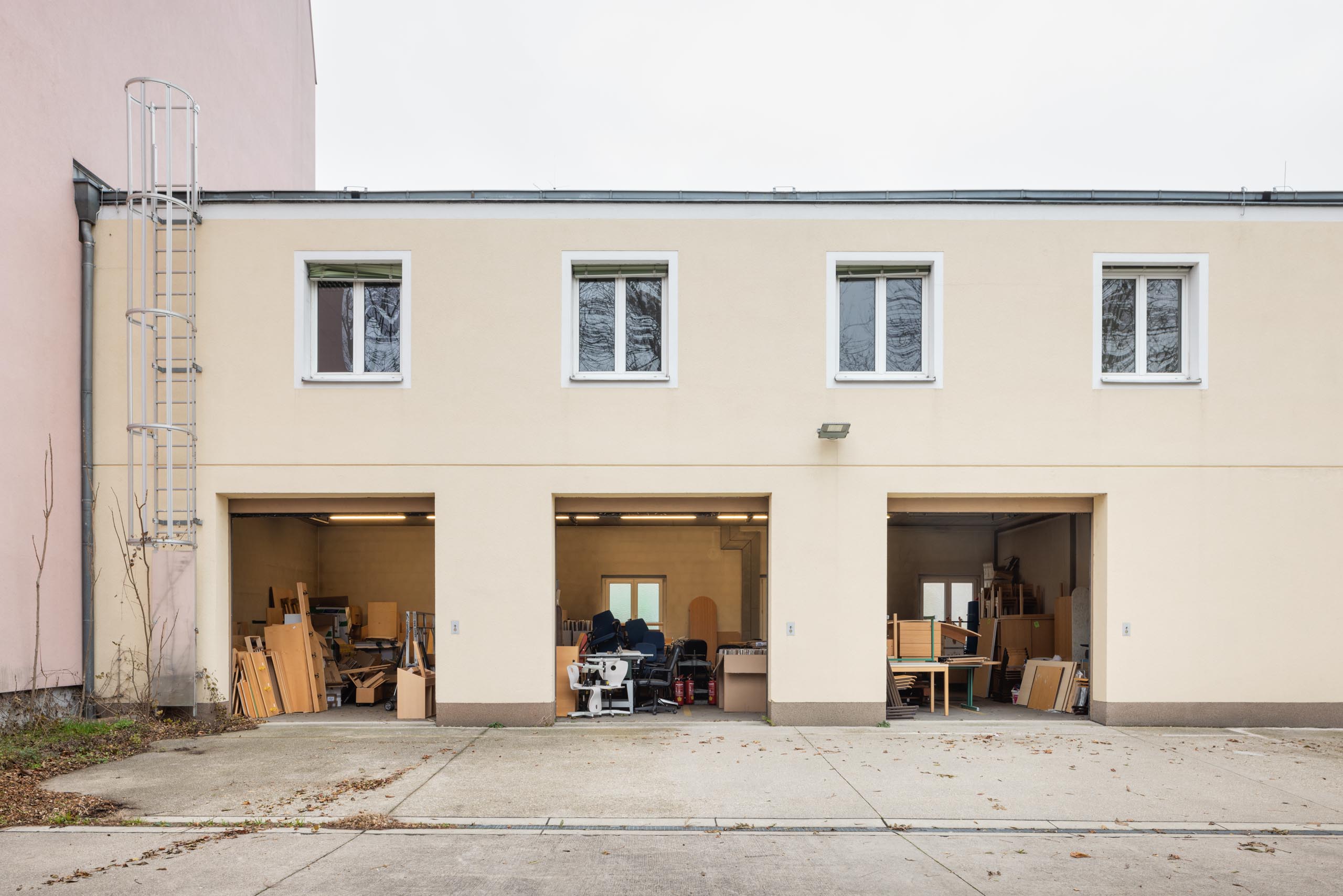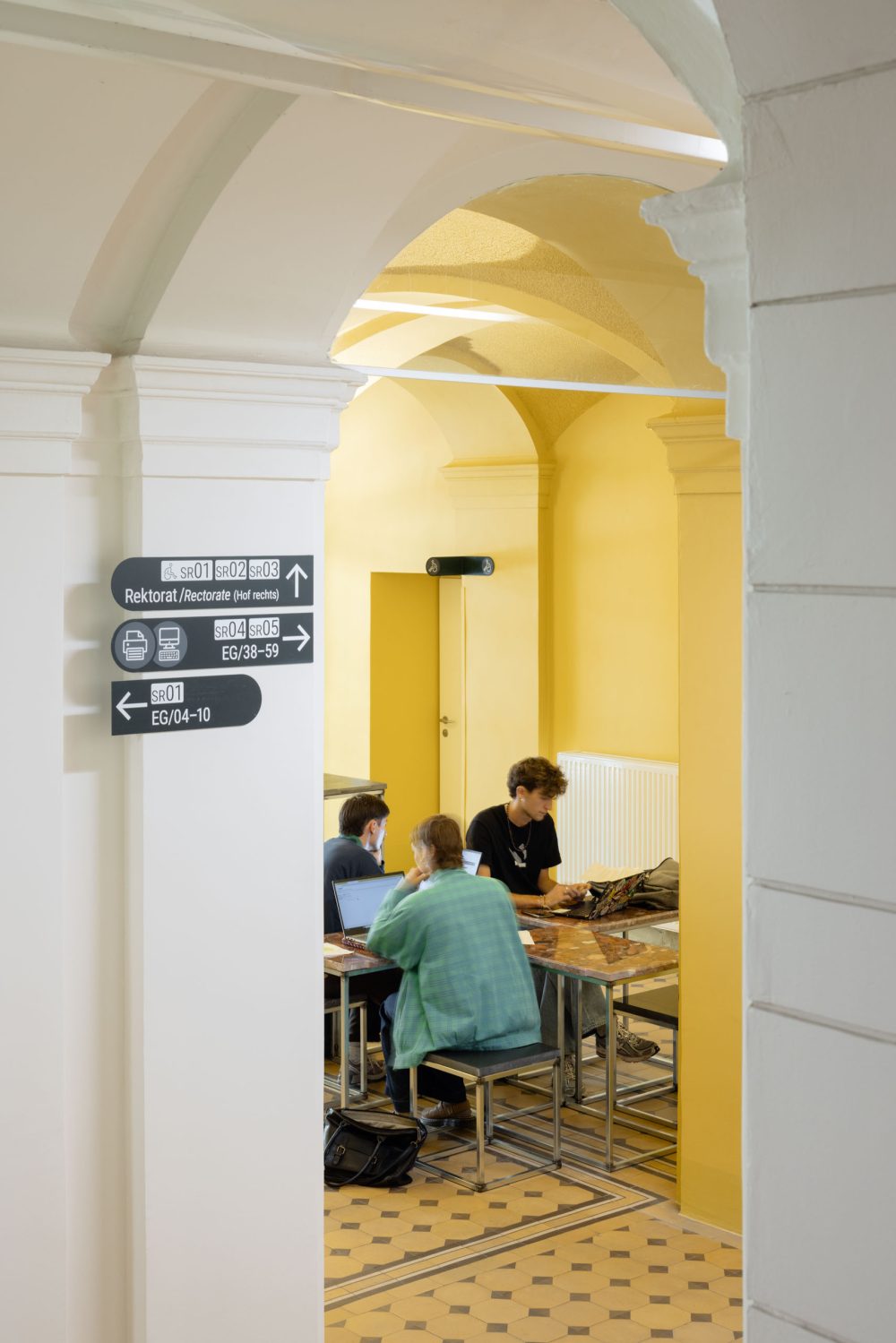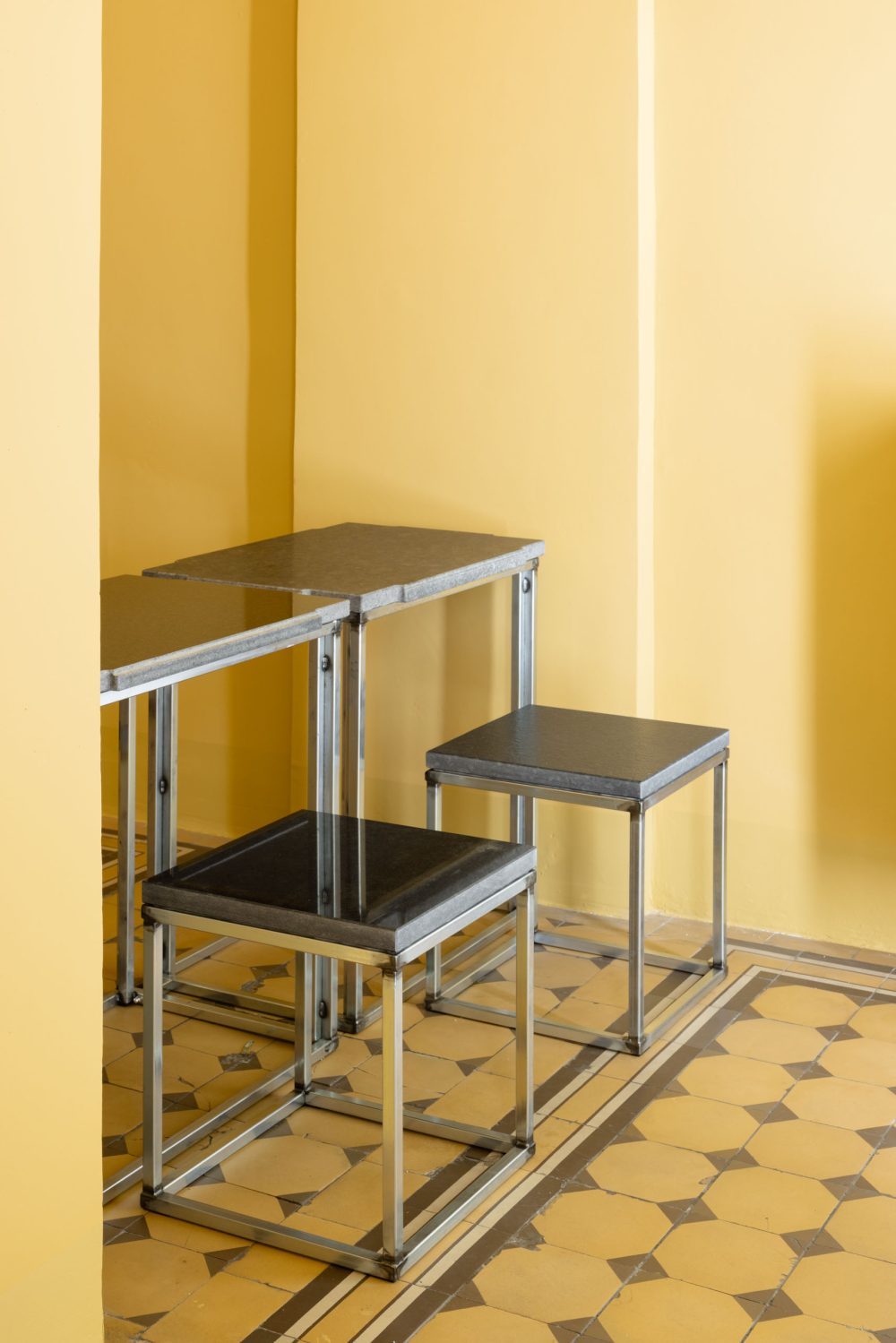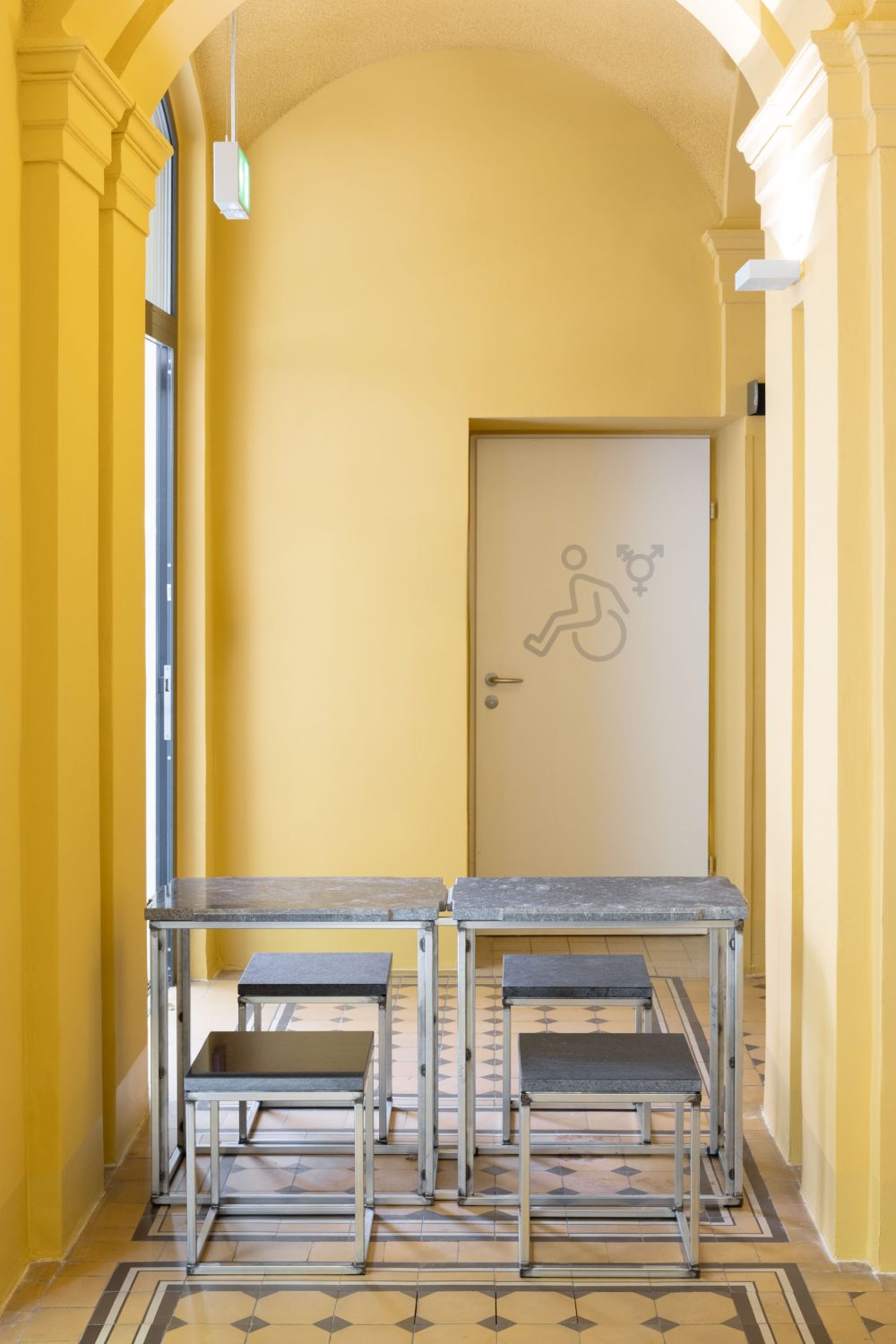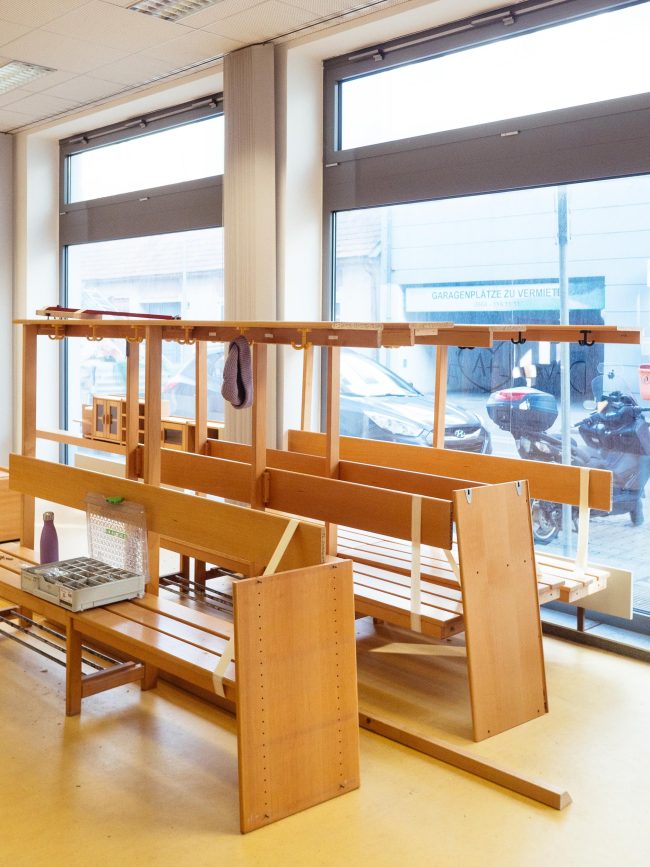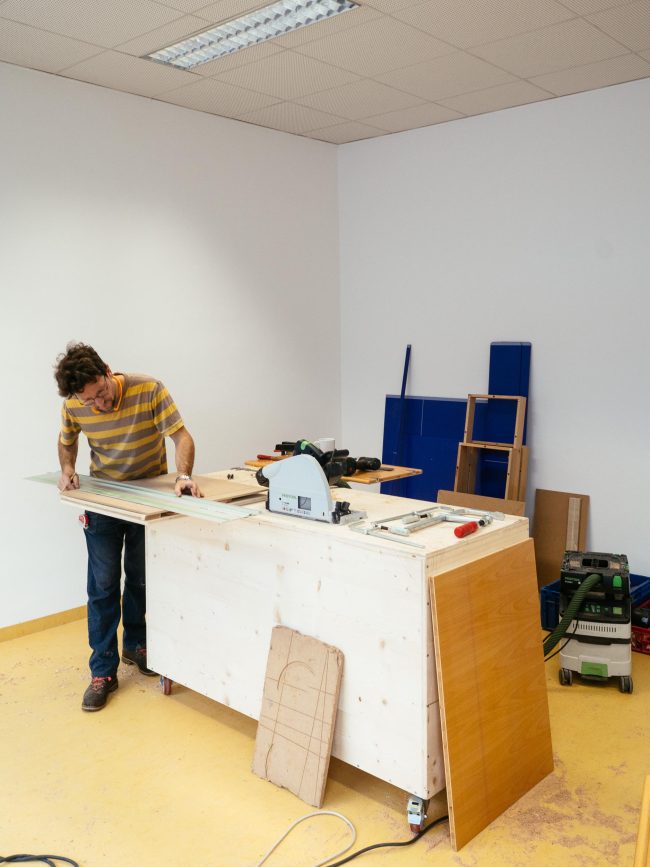SOFA – SCHWECHAT
Type: social and family advisory center
Category: interior architecture and design
Year: 2024
Photography: Matej Hakar
Client: City of Schwechat
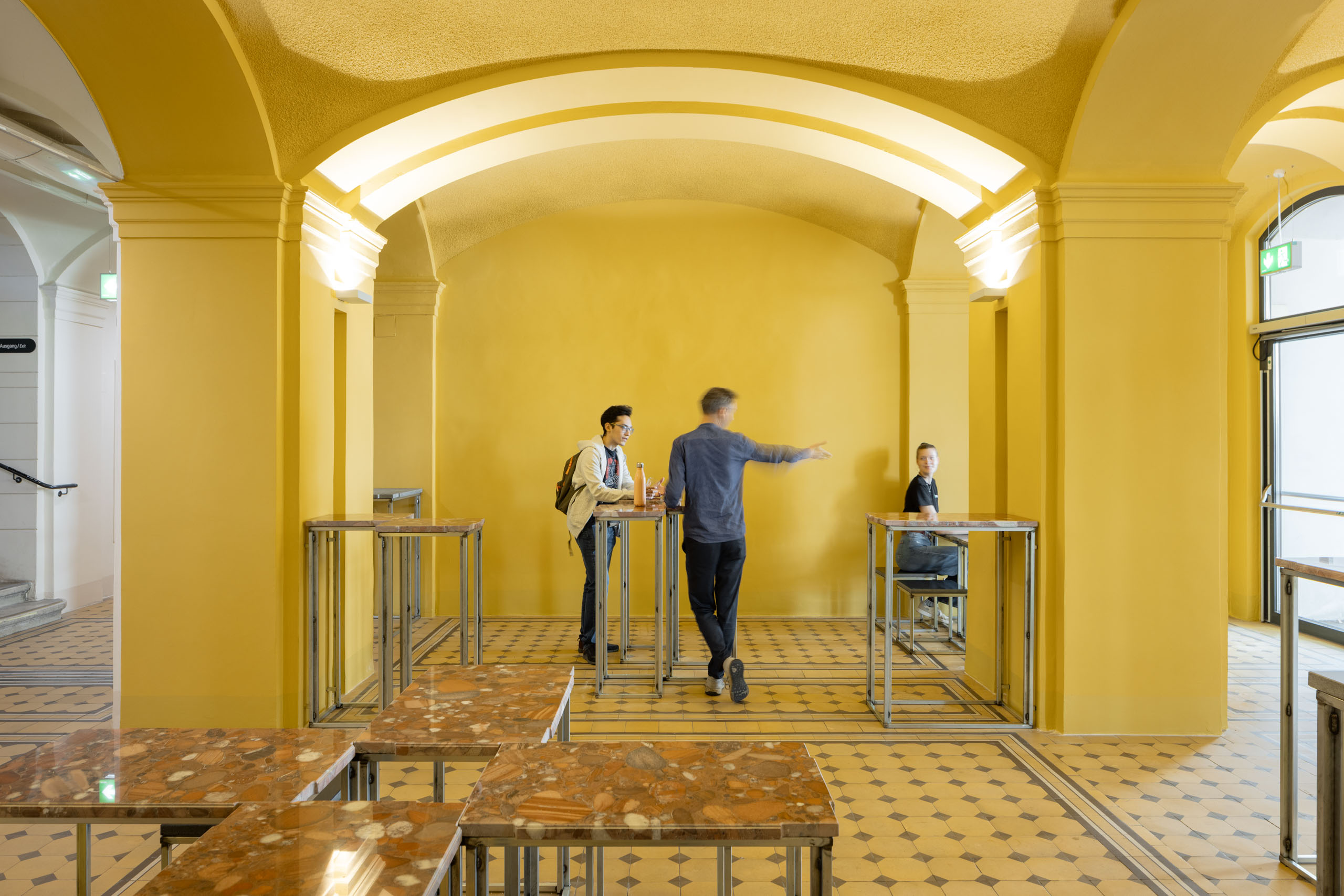
A new space was created on the ground floor of a building in Sendnergasse to house the Social and Family Advisory Center of the City of Schwechat. The rooms were renovated and adapted to meet the diverse requirements of this central social institution. At its heart lies a spacious, multifunctional room with large glass facades opening onto the street, radiating openness and presence—an important symbol of the facility’s significance in the city.
The room’s uses are as versatile as the services offered: from a parent-child café to creative workshops and lectures on topics like non-violent communication in families. Therefore, diversity and flexibility were at the core of the design concept.
Circular Design as a Guiding Principle – Sustainability was the focus of the furnishing concept: only furniture from the city’s existing inventory was used. The approach was deliberately resource-conscious—not just the most attractive pieces were selected, but all elements with potential for reuse were included.
The project began with a detailed inventory of the available furniture. Selected items were digitally recorded and formed the foundation for the design concept. In close collaboration with a carpenter, an implementation plan was developed that combined efficiency with high craftsmanship.
Design with Atmosphere and Functionality – Beyond the furnishings, a key emphasis was placed on creating a harmonious overall aesthetic. New, dimmable lighting allows for flexible usage scenarios and enhances the room’s ambiance. The ceiling and existing vertical blinds were artistically redesigned in collaboration with David Mase a local artist, enriching the room’s atmosphere. An eco-friendly carpet certified with the “Blue Angel” label not only provides a pleasant feel but also promotes a healthy indoor climate. New curtains divide the space into three sections, offering both visual and functional clarity.
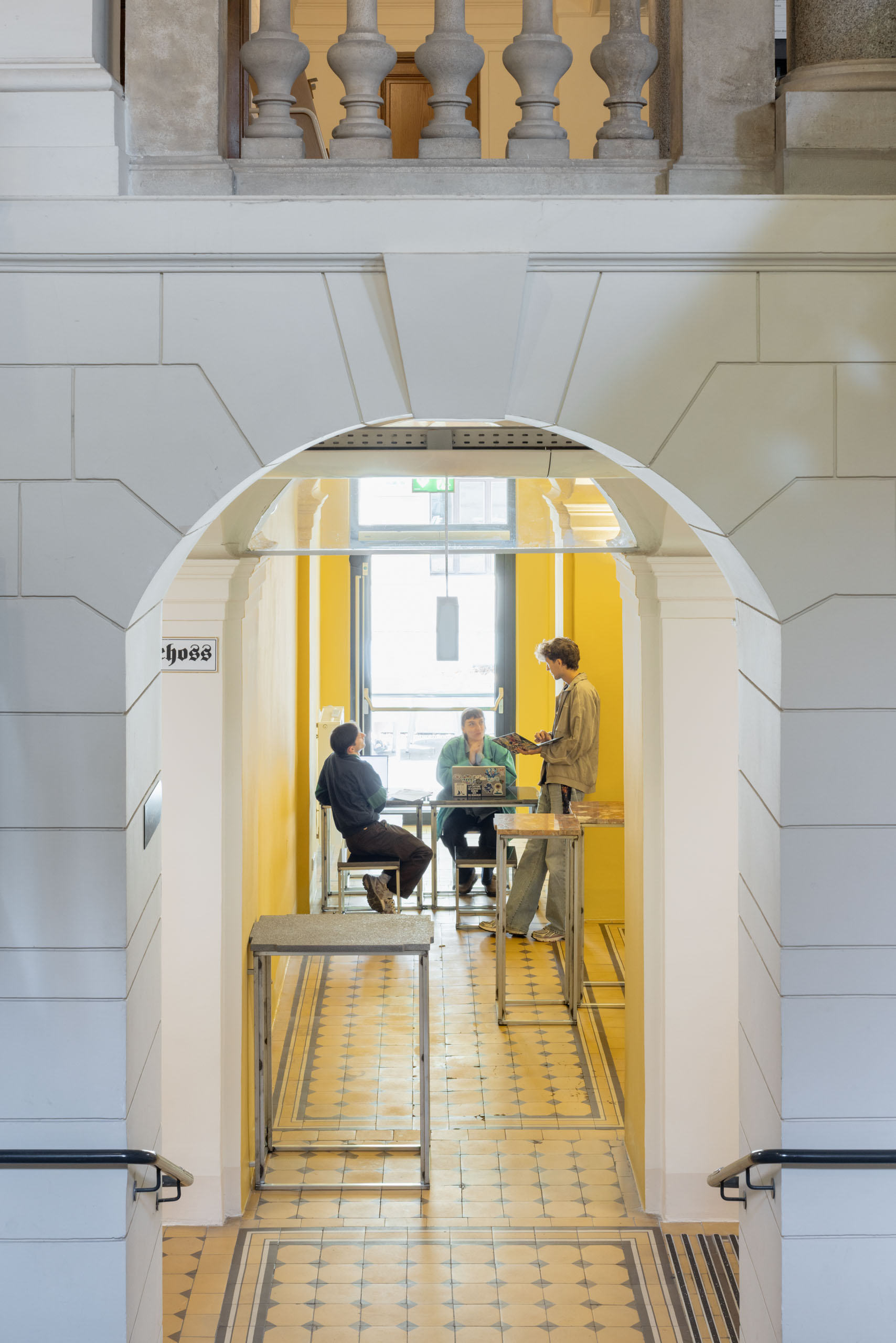
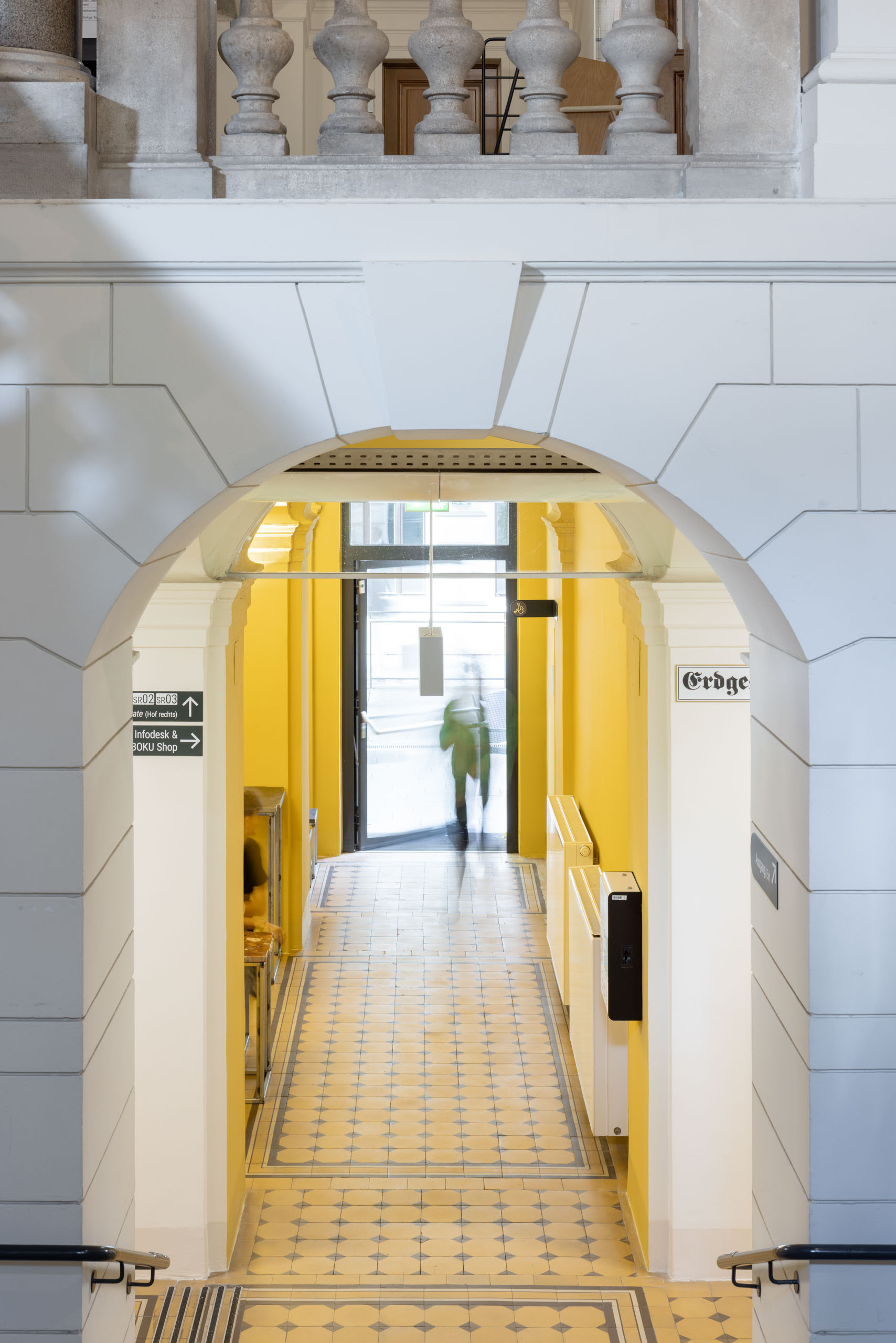
The gray vertical slats were refurbished. For this, the slats were removed, partially shortened, and a green pattern was applied using a stencil and paint roller.
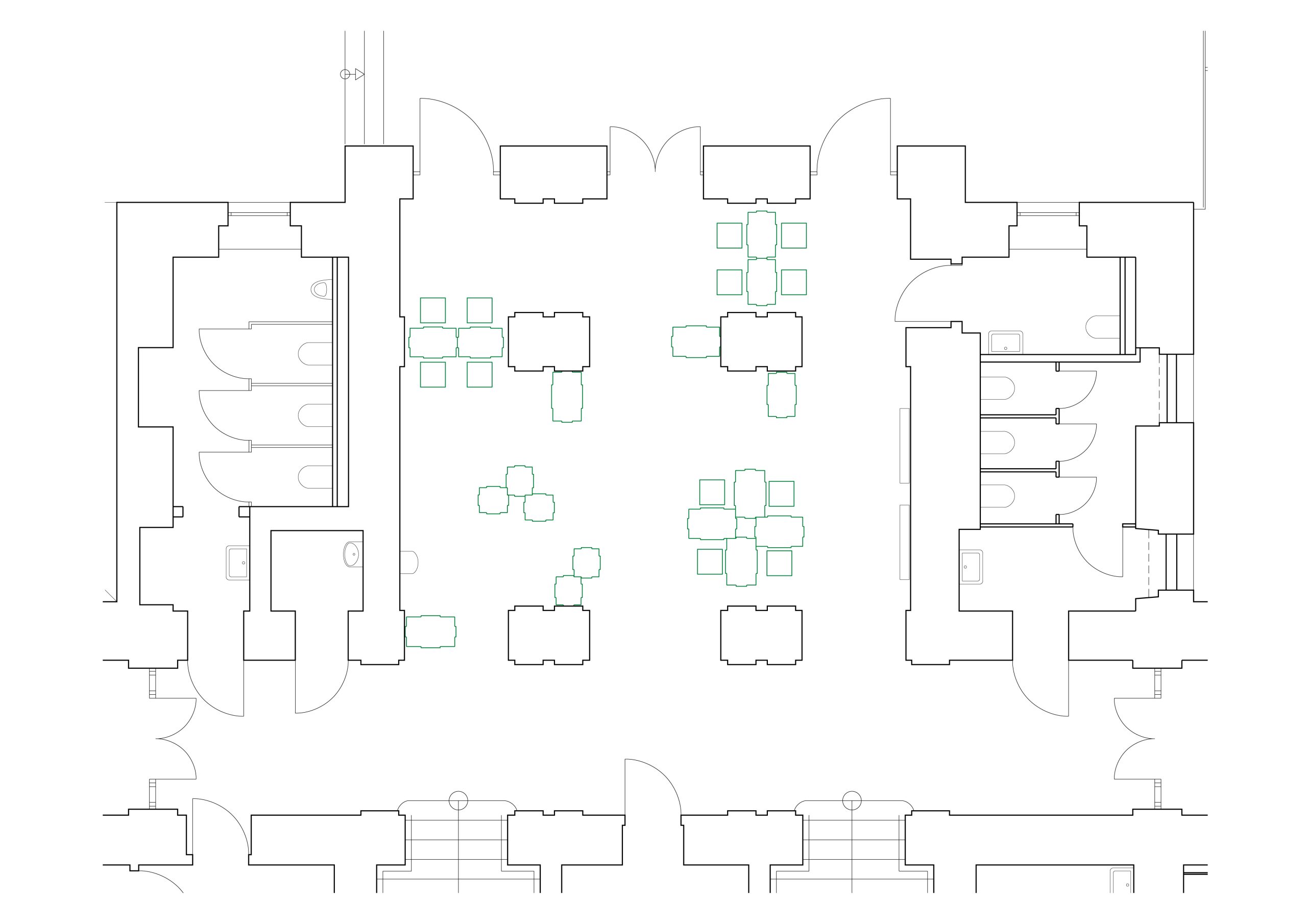
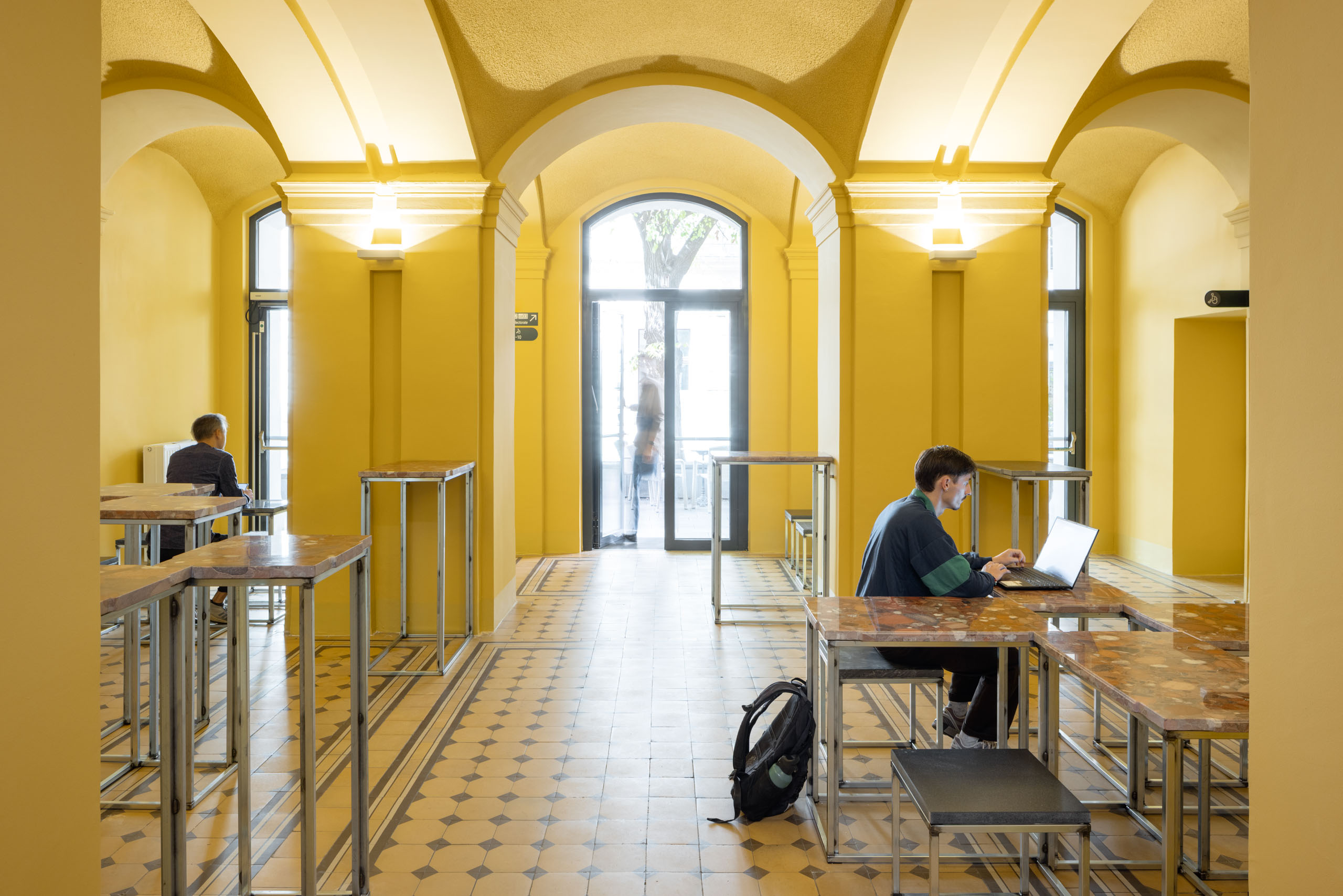
The high-quality blue tabletop was kept because an unused table tennis table was available after its stand was badly damaged.
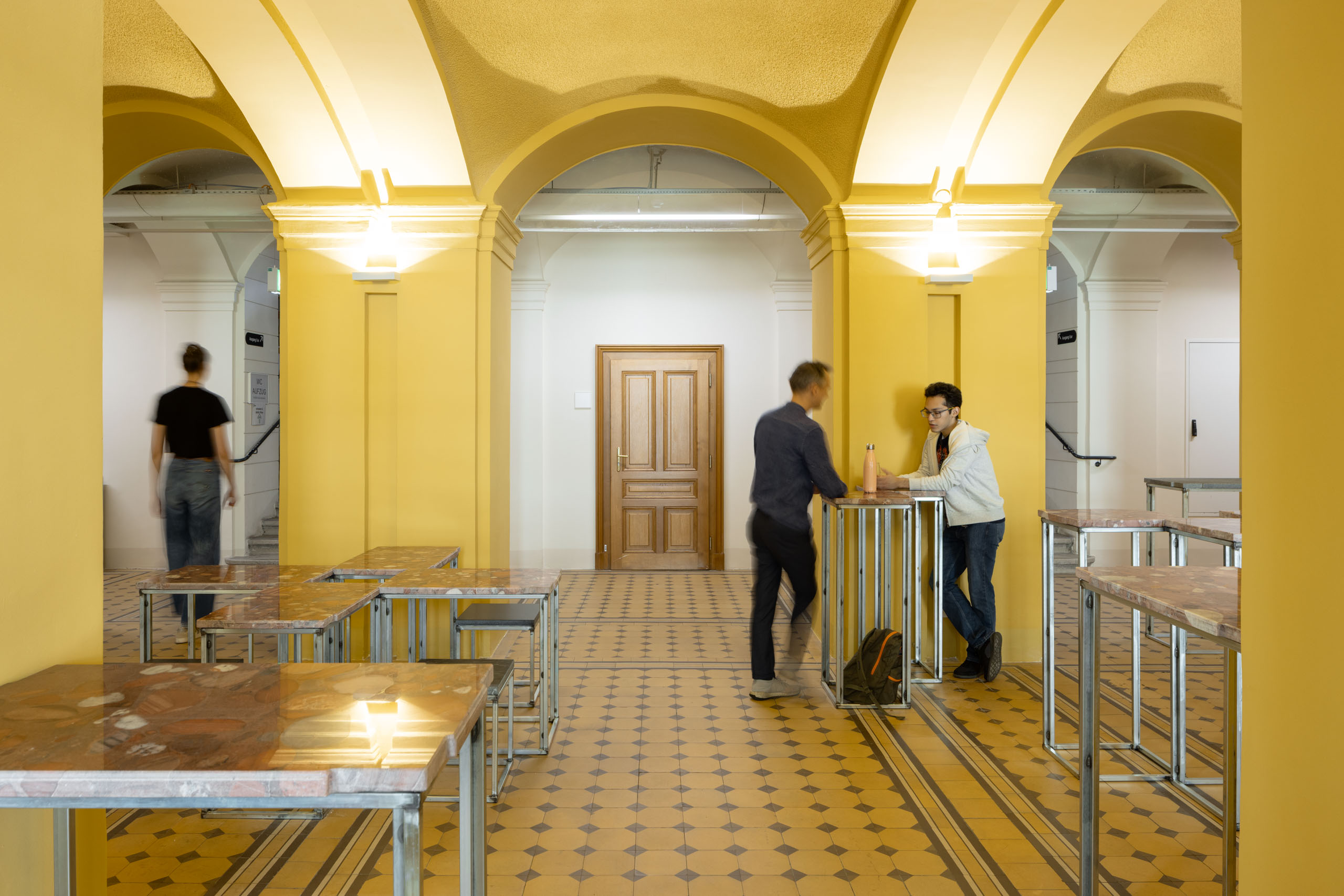
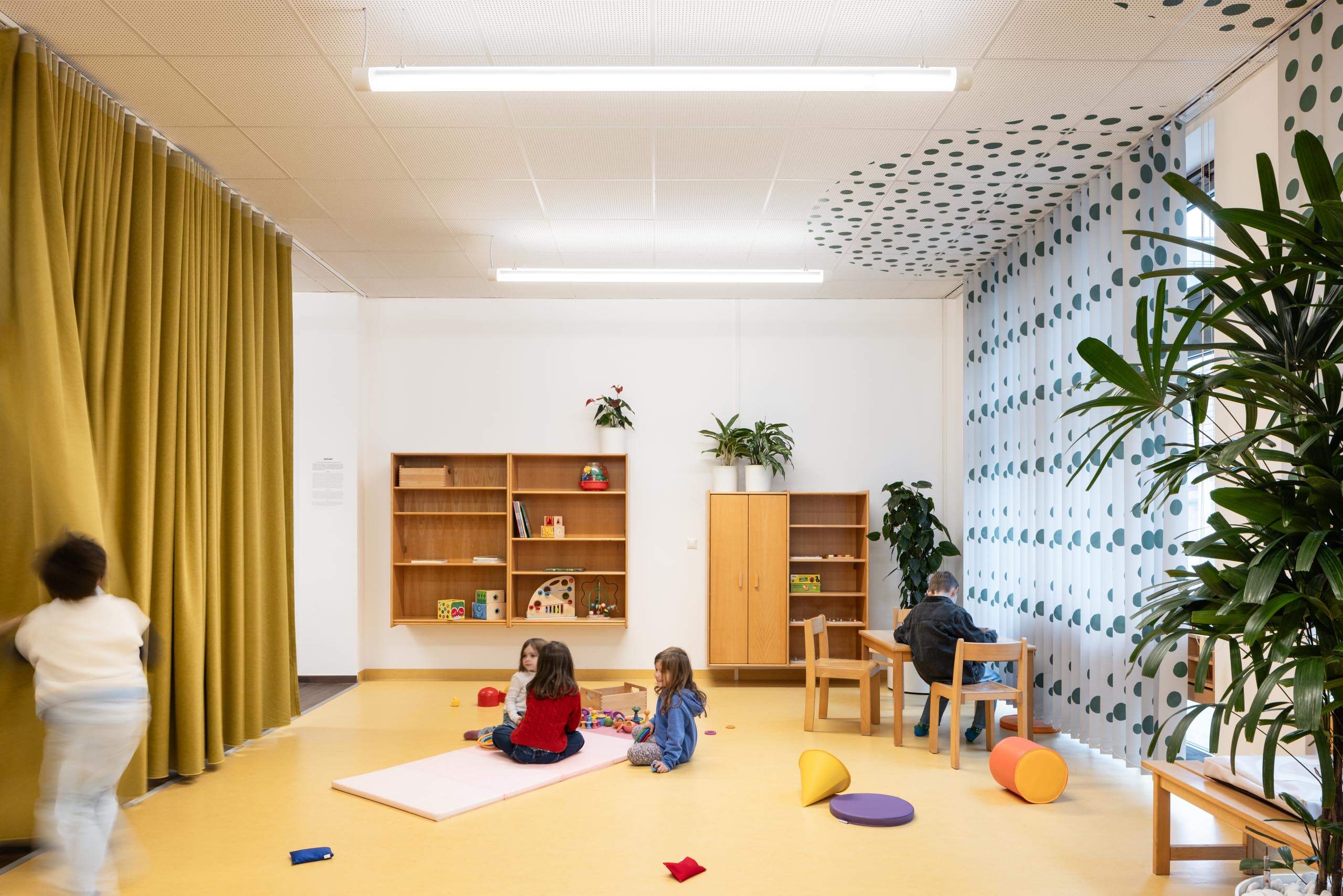
A section of the table tennis tabletop was used as a cover for the existing radiators. The corners were rounded to protect children from injuries.
Only furniture from the municipal inventory was used.
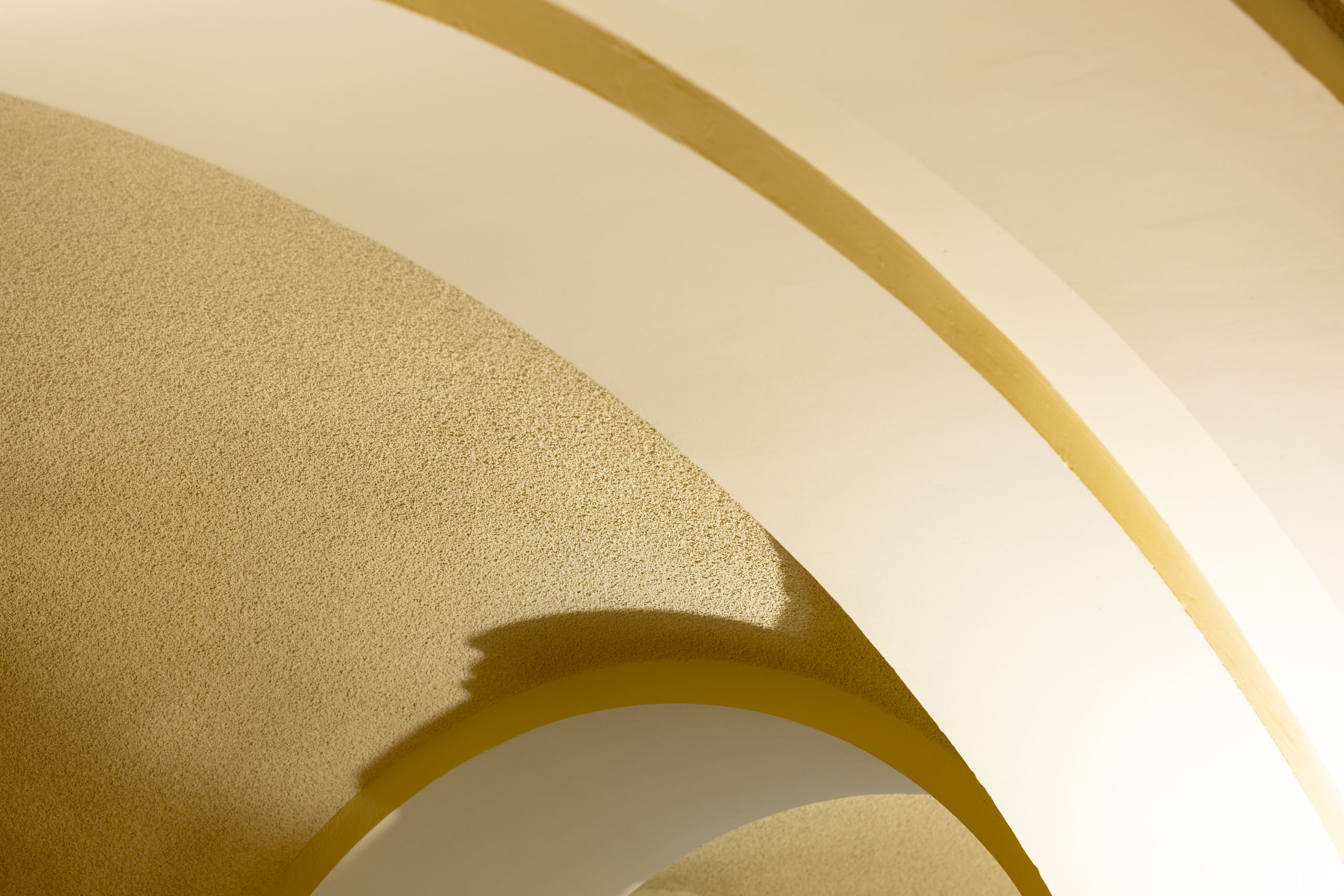
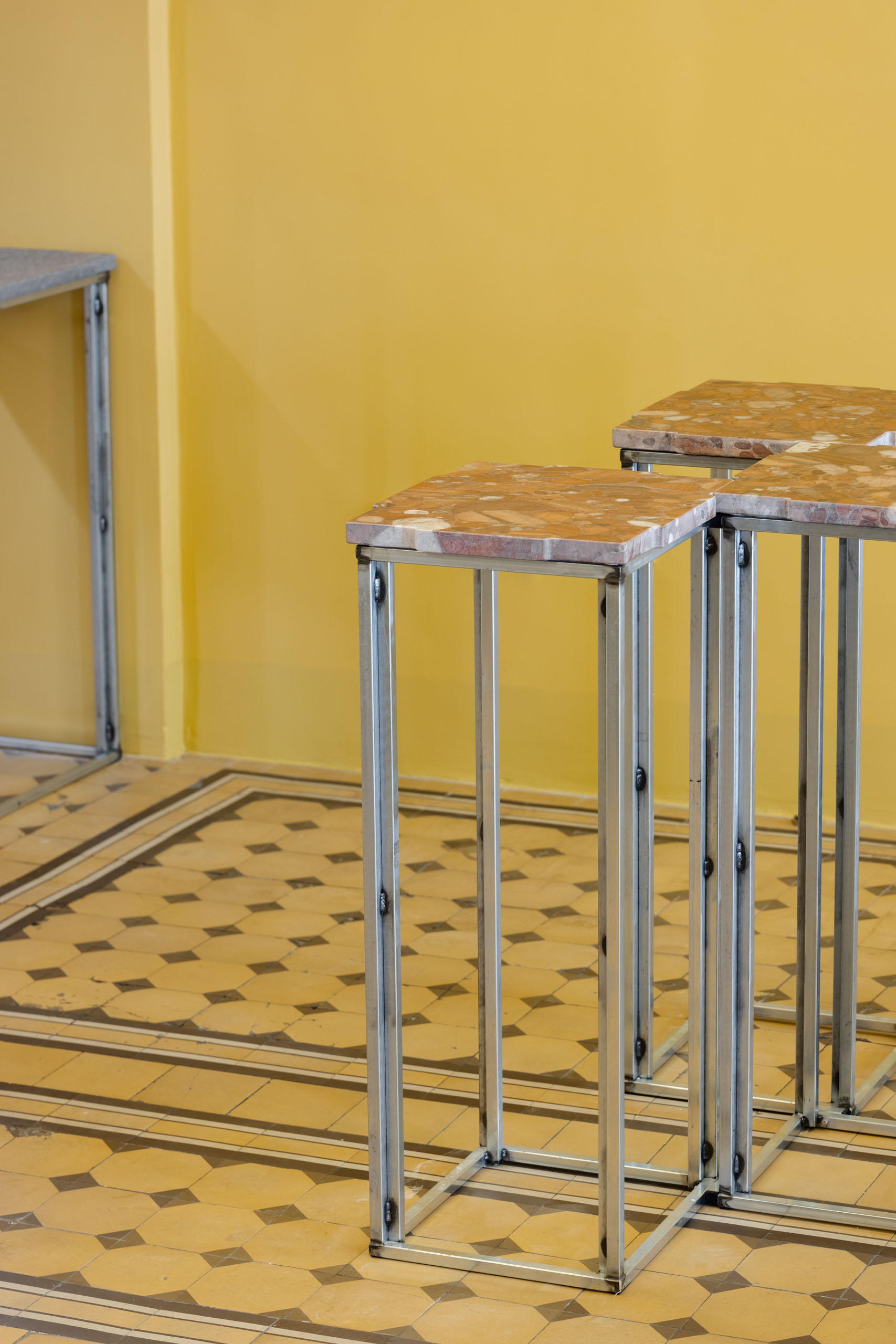
The material for the construction came from the storage space just 30 meters away.
